Paleo Vet is family-weight fun a few tricks up its sleeve
Playing games with the kids is what it’s all about for me, so I am always especially delighted when we get offered a game that is simple enough for them to play, but chunky enough for me to enjoy alongside them. In Paleo Vet, one to four players will compete to see who can heal the most prestigious dinosaurs — but with predators, escapees and a host of whacky upgrades, there’s more to process than meets the eye.
Paleo Vet begins with a pretty simple setup. The players simply make five stacks of dino cards with five stacks of upgrade cards below them, and then they turn the top card of each deck face up on top of the stack. Then everyone grabs four basic white dice and one “wild” token, as well as a player aid card. If you have the deluxe upgrade kit as we do, you’ll place these stacks on a neoprene mat in the middle of the table, and each player will receive a board to use as their own hospital – these additions are useful, but absolutely not mandatory to play.
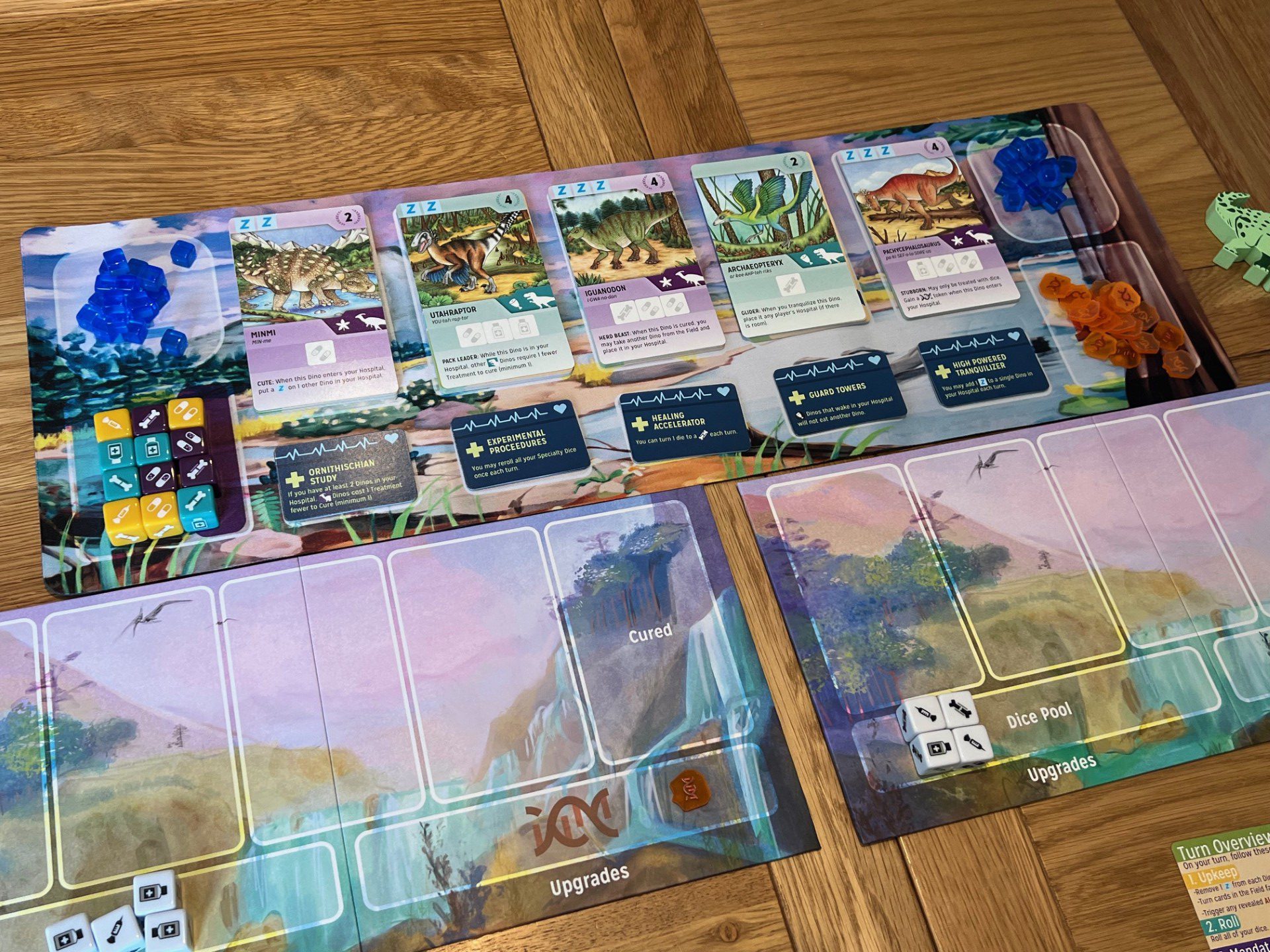
The deluxe kit also includes some upgraded tokens, but whether you use them or the cardboard ones that come in the base game, you’ll also place out sleep tokens, wild tokens and coloured dice in some kind of central supply. A first player token is then given to the oldest player, who (for a nice change) will act before anyone else.
The turn structure in Paleo Vet is simple enough for players of almost any age to understand, with perhaps the low bar being about five or six years old, with the caveat that elsewhere in Paleo Vet there is a fair bit of complex text that probably drags it up to a game best played by six, seven or eight year olds depending on reading level. Either way, the turns themselves flow quickly and simply.
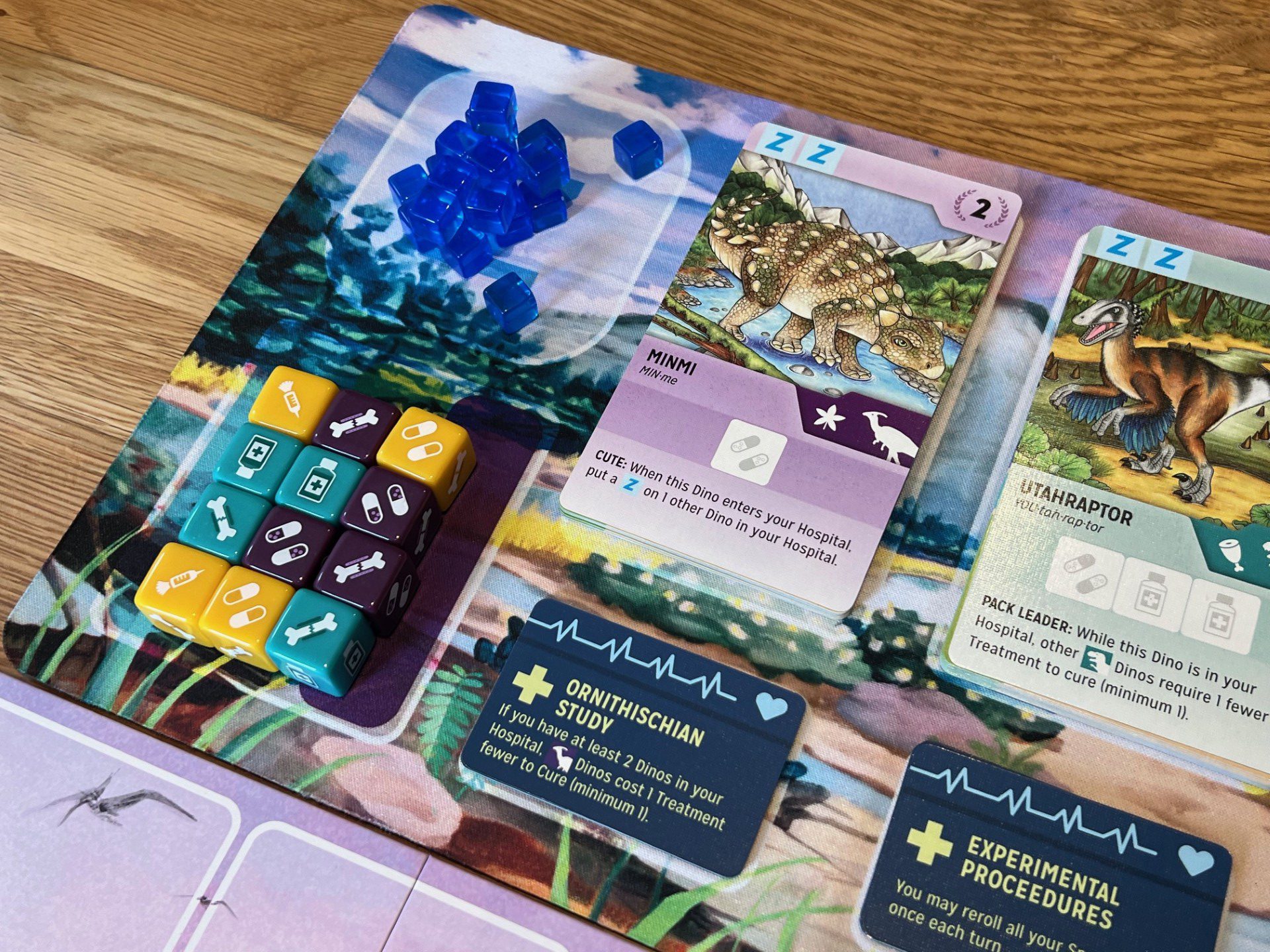
A player begins by flipping over the top card of any stack where there is a face down card (usually because the prior player took the face up one.) Next, the player will remove one sleep token from every dino in their hospital and rolls all of the dice available to them. If they have fewer than four dinosaurs in their hospital, then the next step is mandatory admission — where one dinosaur has to be chosen from a face up pile and placed into a hospital space.
After this, the action phase begins. During this phase, players will use the dice they rolled, the wild tokens they already have and the effects of any upgrades or dinosaurs in their hospital to “do stuff.” Stuff includes — placing tokens on an injured dinosaur to cure them (and there’s an all or nothing rule here — if you can’t fully cure a dino, you can’t place dice or tokens on it for later), spending two matching symbols to take an upgrade card, or spending three matching symbols to choose a specialist dice.
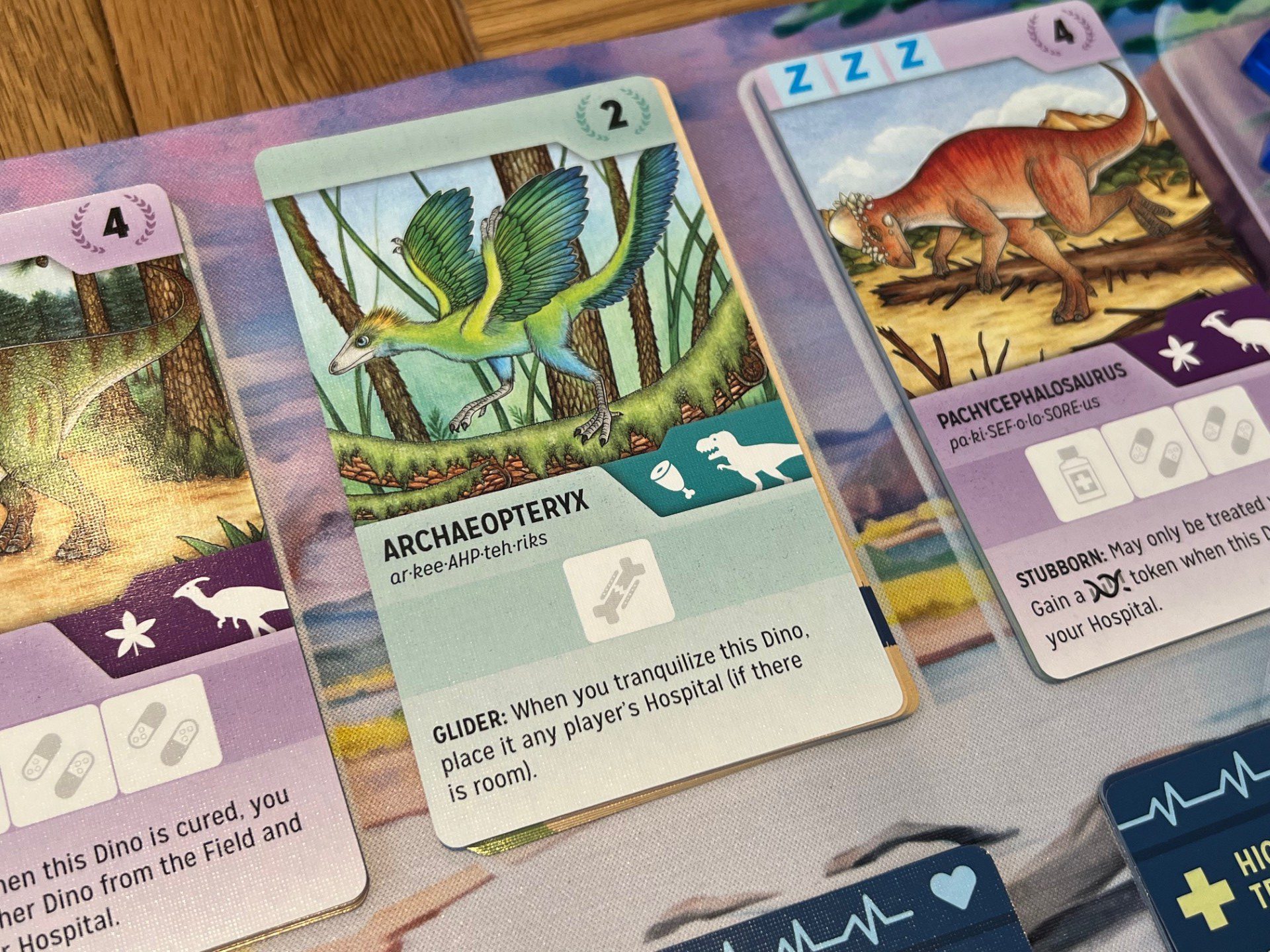
At various times during Paleo Vet, you’ll probably want to do all of these things, but my whole family enough the fact that Paleo Vet offers several ways to win, all of which feel broadly equal in terms of their likelihood of leading to a win. If you get the dice for it early on, it can be great to purchase a specialist die or two, and in turn, this could inform your choice of dinosaur going forwards (because specialist dice have three of the same symbol, and one of each other).
In other games, you might see a chance to take a specific upgrade early, and this will usually offer a passive effect such as the ability to re-roll a specific dice earn turn, or to spend one fewer dice to heal whenever you have two or more dinos in your hospital. Some upgrade cards also provide significant end game scoring potential, and you’ll find these start to get snapped up as the game draws to a conclusion.
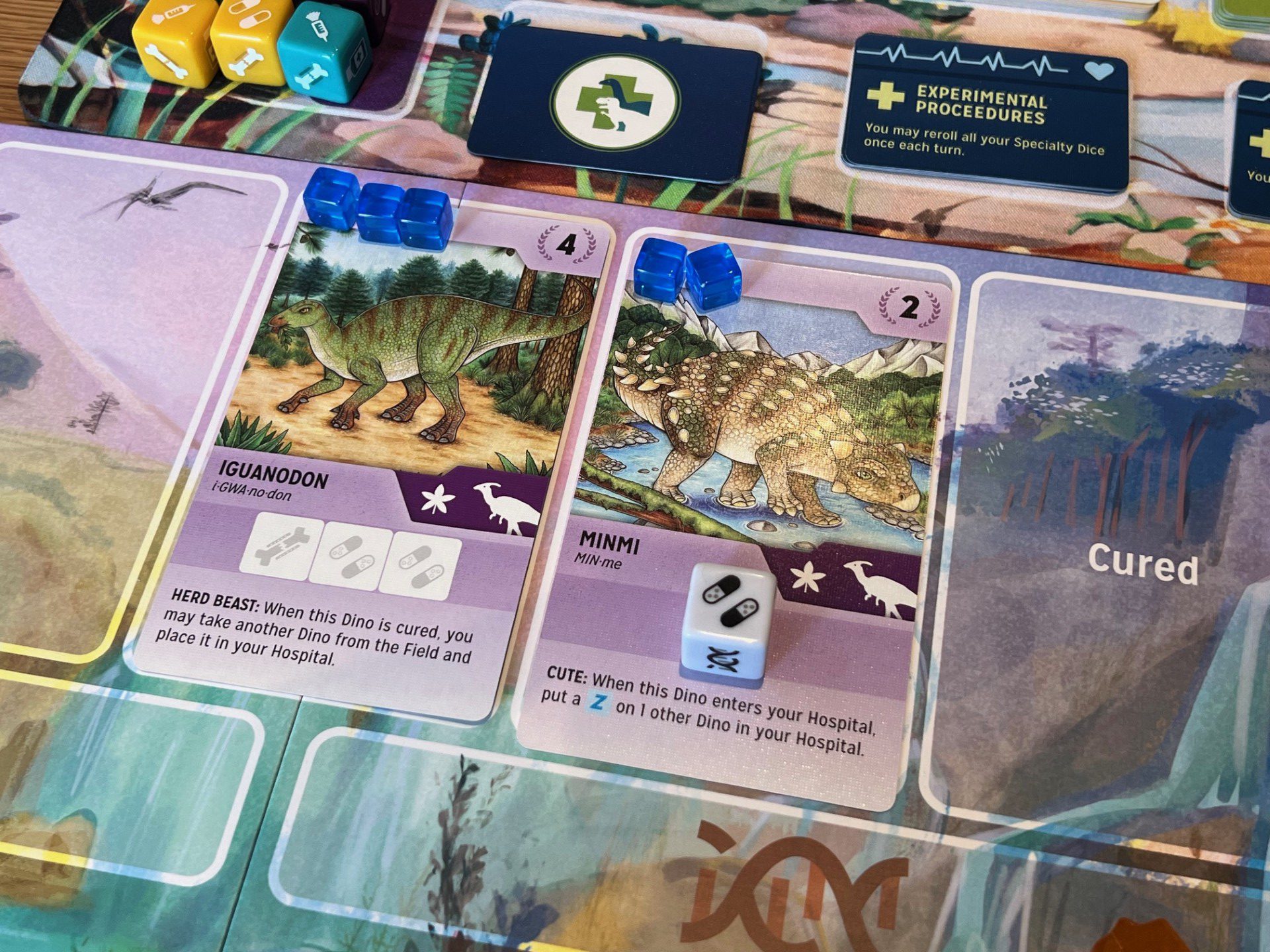
On that note, Paleo Vet ends whenever one of the five stacks of dinosaur cards is exhausted, with the players continuing to take turns until everyone has had an equal number. In real terms, each deck is ten cards deep and therefore the game never outstayed its welcome, and in most cases Paleo Vet can be set up, played and then packed away in about forty five minutes.
The artwork in Paleo Vet is fantastic across the board, with large, clearly laid out cards that feature somewhat cute (but not silly) artwork and a little bit of detail about each dinosaur. I mentioned earlier that Paleo Vet has high reading dependency, and that’s because almost every card has some text on it that affects the game, and in some cases the phase of play in which the text applies is less than completely clear. Adults will be able to work through this, kids on their own might not be able to. With the deluxe upgrade pack, Paleo Vet is absolutely beautiful, with the neoprene mat in particular adding a lot to the table presence of the game.
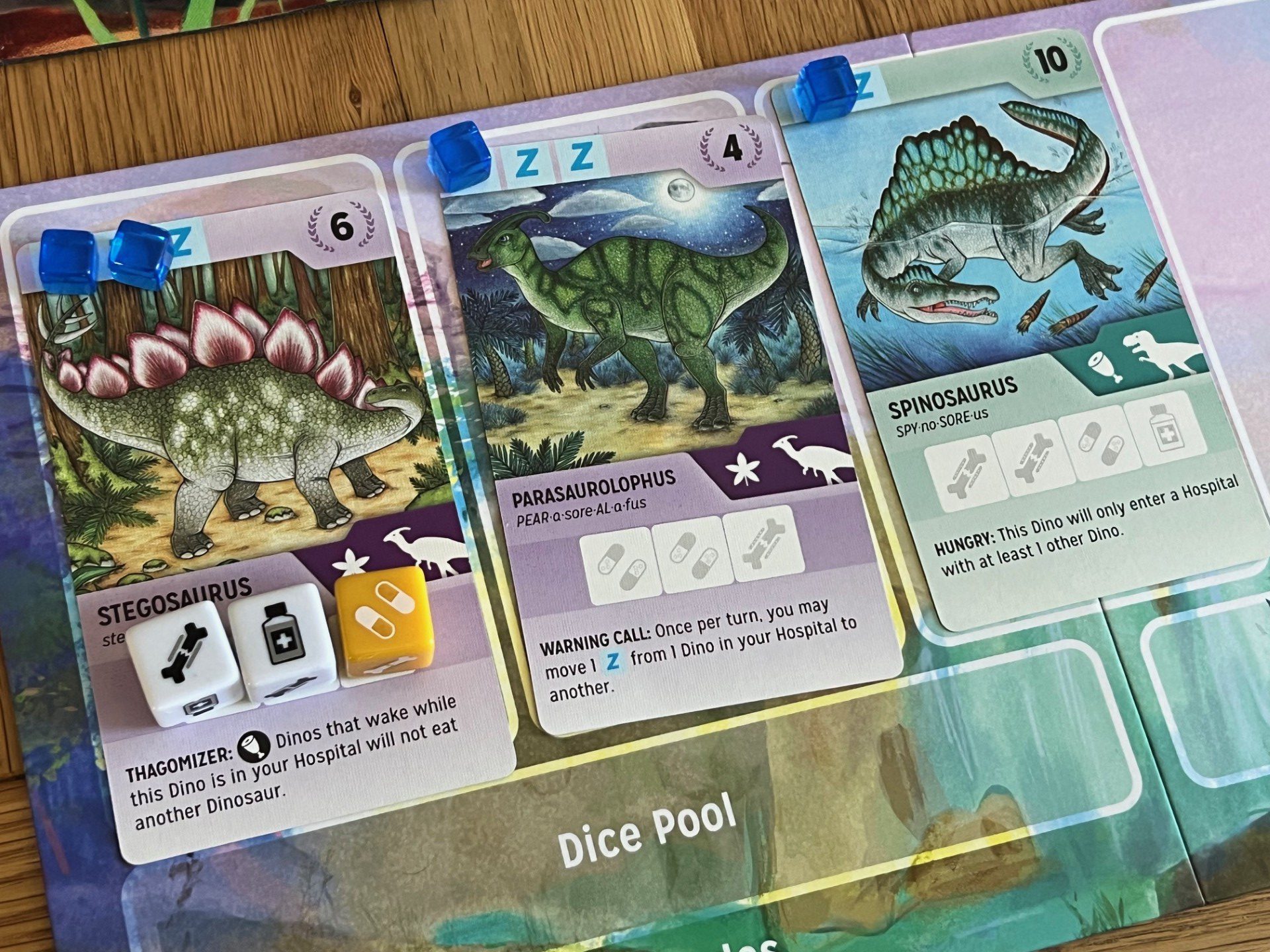
Whilst Paleo Vet doesn’t break new ground, it does tick a lot of boxes for multi-generational players. It has the luck of dice rolling mixed with a lot of methods to mitigate bad luck, it has card interaction and engine building, as well as interaction between players (such as sending predator to your neighbouring hospital who might just run off with a hapless herbivore). The upgrade cards add strategic scoring and further engine building, but you can easily leave them out to make the game simpler for young players.
Overall, Paleo Vet is a clever and enjoyable addition to your family game shelf, and whilst it might share mechanics with other games, it brings several of them together which you won’t often see in a kid-friendly game. Paleo Vet is also a good game for taking your younger children on the journey to more complex games, and we expect to enjoy it for at least a year or two to come.
You can find Paleo Vet on Amazon.
Comments are closed.